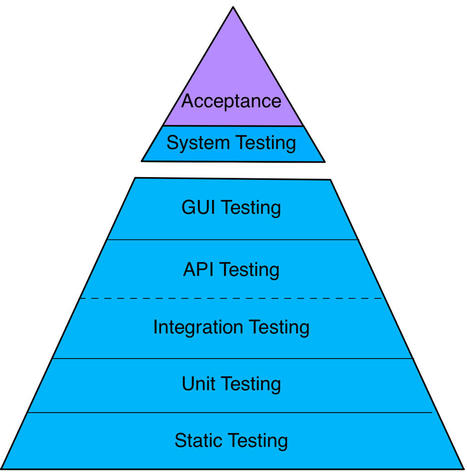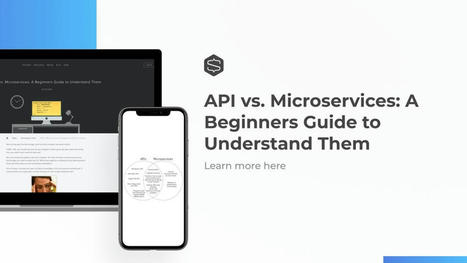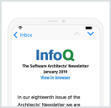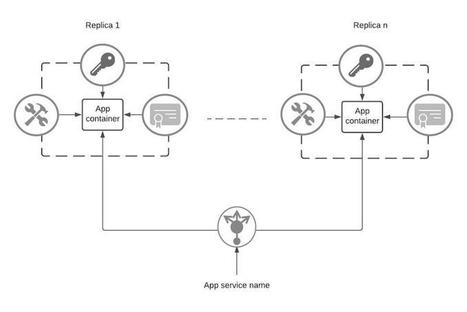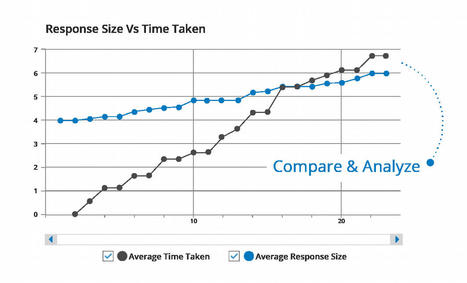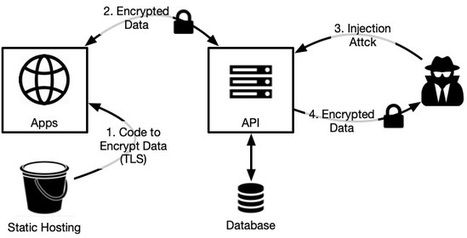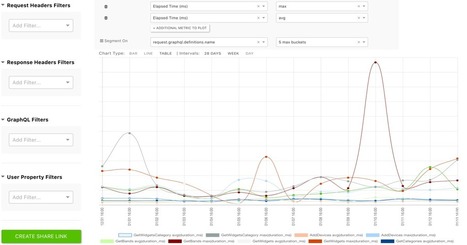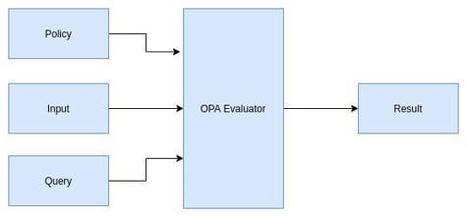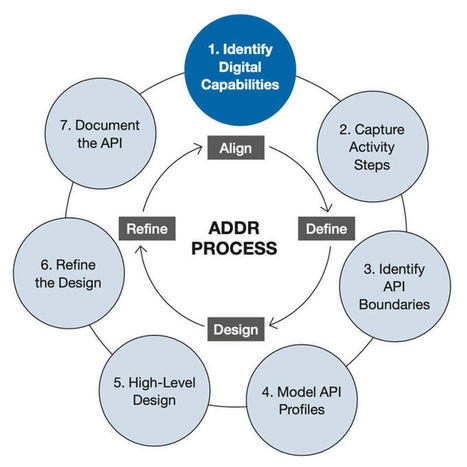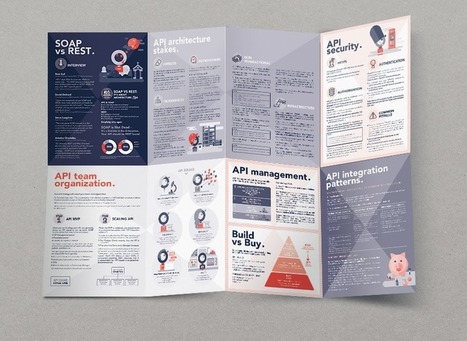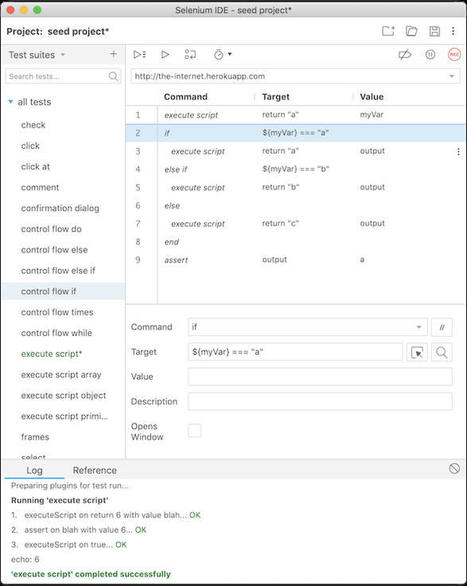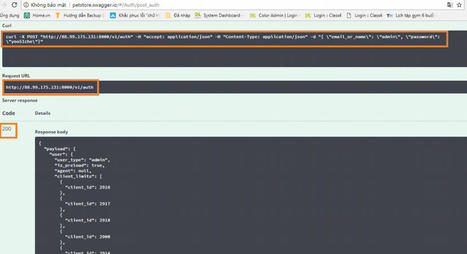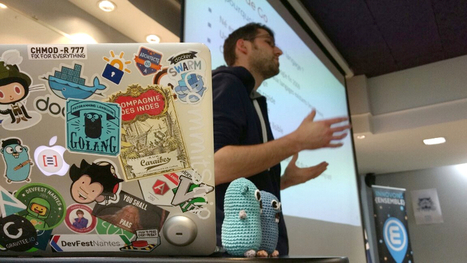 Your new post is loading...
 Your new post is loading...
On this page, an overview of test automation pyramids can be found. The collection started as an exploration of the development of models in software testing. The test automation pyramid turned out to be a very popular model and has seen a great deal of modifications and varations since its conception by Mike Cohn in 2004.
These definitions might seem a bit obtuse, so here's how I would define them:
API stands for Application Programming Interface. APIs define how two pieces of software can connect and talk to each other. If your application were a big company, your API's job would be to keep in touch with external parties (customers or company partners, for example). Most APIs are organized around some standard, like REST or GraphQL, so that everybody knows how to use them.
Microservices are pieces of software (often just isolated functions) that do a single, tiny, independent part of a bigger application. If your application were a big company, each employee would be a microservice, each playing their own specific and small role, working alongside but independently from their coworkers. This lets you make changes to individual microservices without affecting the rest of the application. In a big company replacing or retasking one employee in a large team would probably not affect the rest of the company all that much.
It's the evolution of the monolith architecture. Instead of having one block composing the whole application, every component is divided into smaller building blocks.
Put like that, does it make a bit more sense how they're different and how they can work together?
Having a basic understanding of web based applications is a good foundation for designing a working Web API. But, if you want to create a good API you need a lot more than that. Designing a good API is hard work and it’s easy to feel overwhelmed when it’s your job to make one.
This article describes a vendor/technology-neutral reference architecture for a cloud native digital enterprise that can be mapped into different cloud-native platforms (Kubernetes and service mesh), cloud providers (Microsoft Azure, Amazon AWS, and Google GCP), and infrastructure services.
James Higginbotham affirme qu'un processus de conception d'API "encourage l'efficacité tout au long du processus de livraison". Cet effet se produit parce que l’objectif principal est le contrat d’API pour les besoins des utilisateurs et des développeurs. La résilience aux changements d’implémentation interne au fil du temps est un avantage des process de conception d'API.
Le process ADDR de l'auteur divise le processus de conception d'API en cycles composés de sept étapes regroupées en quatre phases. Ces phases (traduites en français) sont Aligner, Définir, Concevoir et Affiner.
L'idée est d'aligner toutes les parties prenantes, puis de traduire leurs exigences dans des définitions de fonctions numériques, résultant en une conception technique d'API. Cette conception est ensuite affinée grâce aux commentaires, à la documentation, au prototypage et aux tests. Étant donné que l'ADDR est un processus itératif, les apprentissages de chaque itération sont pris en compte pour la suivante.
L'auteur souligne que la conception d'une API est une étape distincte et critique de la livraison de logiciels tout en reconnaissant que les équipes peuvent concevoir et livrer des API avec succès sans suivre un processus de conception formel.
D'autres auteurs ont exprimé leur point de vue sur la conception d'API. Ils tendent à converger vers les mêmes conclusions.
En informatique, la programmation réactive est un paradigme de programmation visant à conserver une cohérence d'ensemble en propageant les modifications d'une source réactive (modification d'une variable, entrée utilisateur, etc.) aux éléments dépendants de cette source.
Le terme Micro Frontends est apparu pour la première fois dans ThoughtWorks Technology Radar à la fin de 2016 . Il étend les concepts de micro-services au monde du FrontEnd
A test-automation framework is a set of best practices, common tools, and libraries that help quality-assurance testers assess the functionality, security, usability, and accessibility of multiple web and mobile applications. In a "quick-click" digital world, we're accustomed to fulfilling our needs in a jiffy. This is one reason why the software market is flooded with hundreds of test-automation frameworks.
Bien souvent, le bon fonctionnement de notre application métier est couverte par des tests unitaires. Cependant, lorsqu’on travaille sur un projet web, il n’est pas évident de vérifier le comportement des web services que l’on expose. Dans cet article je vais vous présenter SoapUI. Développé par SmartBear Software, cette application Java open source sous licence EUPL permet de manipuler des requêtes SOAP et REST allant de la simple injection de requête jusqu’à la mise en place de tests de charge.
Swagger offers tools to validate that your API works as it should, explore new API capabilities, and allows for seamless integration with automated API testing tools like ReadyAPI.
Points Clés
La cryptographie dans la couche application fait partie d'une tendance à déplacer davantage d'infrastructures et de responsabilités informatiques vers des rôles de développeur ou de DevOps.
Le chiffrement de bout en bout est un type de cryptographie dans la couche application de plus en plus populaire.
Ce type de chiffrement permet aux organisations d'appliquer le contrôle d'accès à l'aide de la gestion des clés ainsi que des politiques.
La livraison de code en toute sécurité aux utilisateurs finaux est très différente selon la plate-forme; celui basé sur JavaScript dans un navigateur est le plus difficile.
La confidentialité et la sécurité peuvent être grandement améliorées avec ces approches, donc malgré les défis, cela en vaut la peine.
When a client makes a request to a microservice, behind it will be a network of microservices to cooperate and all together will produce a response. In this kind of architecture, a single client request is dispatched by a network of microservices.
On the other hand, a single API will handle a client request, and the request will be dispatched with the cooperation of several components organized in layers inside the same API. Usually, one layer will have the controller, other layer will contain services, and at the bottom you will find repository objects.
In that way, an API architecture is arranged in layers, while a microservice architecture is disposed as a network.
If you want to know more about cloud computing and microservices you can review related content in below references.
A list of the most important API metrics every API product manager and engineer should know, especially when you are looking into API analytics and reporting.
|
Open Policy Agent is an open-source engine that provides a way of declaratively writing policies as code and then using those policies as part of a decision-making process. It uses a policy language called Rego, allowing you to write policies for different services using the same language.
OPA can be used for a number of purposes, including:
Authorization of REST API endpoints.
Allowing or denying Terraform changes based on compliance or safety rules.
Integrating custom authorization logic into applications.
Implementing Kubernetes Admission Controllers to validate API requests.
OPA was originally created by Styra, and is now part of the Cloud Native Computing Foundation (CNCF), alongside other CNCF technologies like Kubernetes and Prometheus.
In this article, I will give an overview of Open Policy Agent, explain why you would want to use it, as well as showcase how you can use OPA with your Spacelift account. Although OPA can serve many purposes, I’m going to focus on how it can be used alongside Infrastructure as Code.
PayPal a récemment publié un billet de blog décrivant l'adoption de GraphQLl au cours des dernières années.Cela a commencé par l’application Checkout en 2018 et s'est résumé à la création d'une API f...
Kalele Leading experts in Domain-Driven Design (DDD), Event-Driven, and Reactive Architecture. Providing consulting, programming, and world-class training services to clients who seek quality, expert results in software architecture and development.
Dans un monde où il est de plus en plus facile de rendre le code sûr et naturel, cela devient de plus en plus critique. Dans cet article, nous couvrirons un modèle qui rendra votre API naturelle, intuitive et sécurisée avec Fluent-API.
Cet article porte sur les « API as a Product », c’est à dire sur l’API d’une entreprise exposée « en tant que produit » sur l’internet et qui repose sur un modèle d’affaire. Une API technique par exemple qui serait réalisée pour être dédiée à une application front (qui est le produit) n’entre pas dans le périmètre de cette étude.
One of the most useful design principles that I've found and followed is that of keeping a good separation between the presentation aspects of a program (the user interface) and the rest of the functionality. Over the years where I've seen this done, I've seen plenty of benefits: - Presentation logic and domain logic are easier to understand when separate.
- You can support multiple presentations on the same base program without duplicating code.
- User interfaces are hard to test, separation keeps more logic in more testable places.
- You can easily add a programmatic API for scripting or exposed as services (I actually see these as alternative presentations).
- Presentation code requires different skills and knowledge to domain code.
Research shows that there is an increasing demand for near real-time APIs, in which speed and flexibility of response are vitally important. This eMag explores this emerging trend in more detail.
Les tests d'automatisation des applications sont plus faciles avec les outils suivants. Mais avant cela ... Qu'est-ce que les tests d'automatisation? Les tests d'automatisation sont le logiciel
A discussion of Swagger and Swagger UI, and a tutorial on how development teams Can use the open source Swagger UI tool to test the APIs they develop.
Personnellement je travaille à de la refonte d’applications Java au quotidien et un point sur lequel Go se démarque particulièrement c’est sa consommation mémoire et son packaging vers des images docker. Les binaires Go sont petits et autoporteurs (pas besoin de bibliothèque tierce pour leur exécution), les API REST créées en Go sont parfaites pour le cloud et les besoins de scalabilité. Go est aussi très performant et se prête très bien au développement de services frontaux devant accueillir un trafic utilisateur conséquent.
"Les API REST créées en Go sont parfaites
pour le cloud
et les besoins de scalabilité"
Modern cloud applications are highly services-driven and leverage a lot of APIs including external APIs such as Twitter Auth API, Twilio API, Google Maps API, and various PaaS APIs. In a previous blog post, we had talked about the shift from monolithic architectures to microservices and the implications of that change from an operational perspective for Site Reliability Engineers (SREs) and DevOps engineers. In this blog post, we focus on the golden signals of monitoring that are the foundation of service-level observability for large-scale production applications. These golden signals ultimately help measure end-user experience, service abandonment and impact on business. After discussing these signals, we describe how we have approached their measurement in a way that is fundamentally different from the existing approaches that primarily require code-embedded agents or instrumentation of code.
|
 Your new post is loading...
Your new post is loading...
 Your new post is loading...
Your new post is loading...




